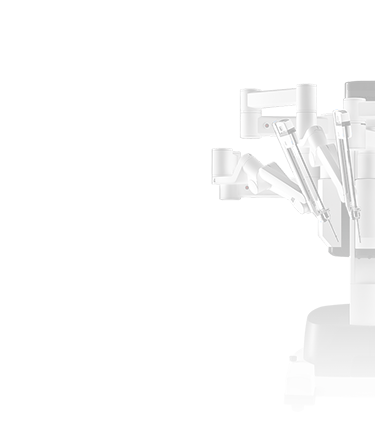

Prostate is a small gland that is only found in men. Its main function is to help in the production of semen. Prostate is located between the penis and the urinary bladder so it encompasses the urethra. Prostate cancer (also known as carcinoma of the prostate) is the second most common cause of morbidity and mortality due to carcinomas in men. In Europe, prostate cancer is diagnoses in 214 patients per 1,000 men, which means the disease can be termed as one of the most essential male medical problems. The risk of incidence increases along with the age, and according to the statistics, it is patients aged 65+ that most often struggle with the disease.
Specialists distinguish types of prostate cancer:
- early (localised) – the cancer is contained within the prostate gland itself and does not attack other organs
- locally advanced – the cancer is contained within the prostate gland and attacks tissues around it
- advanced with metastases – the cancer is located both in the prostate gland and outside of it, and attack other parts of the body (usually bones)
Factors increasing the risk of developing
prostate cancer:
- age– risk of prostate cancer in men below the age of 50 years is small. The disease most often affects patients aged 65+;
- origin– black men from the Caribbean and African territories are at the highest risk of prostate cancer compared with white men or inhabitants of the Asian territories where the risk is the lowest;
- genetics– genetic factors do matter although statistics say that the load due to defective genes accounts for a probability of 5-10% with respect to prostate cancer. If the patient has a family history of prostate cancer or if females in his family have a history of breast cancer, then there is a risk of incidence;
- physical activity– keeping fit and in shape definitely reduces the risk of prostate cancer;
- diet– appropriately balanced diet and a healthy lifestyle significantly reduce the risk of the disease.
Symptoms of prostate cancer are usually related to the problems that concern urination, i.e. the need to urinate more frequently, painful urination and, quite frequently, blood in urine. If the disease is in a severely advanced stage, the patient can also feel permanent fatigue, weakness, loss of appetite and feeling unwell.
Diagnosing prostate cancer
There are several methods to effectively diagnose prostate cancer in men. The first step is to visit the GP who will perform a rectal examination and check the blood level of PSA (prostate-specific antigen). If the PSA level is elevated, the diagnosis is not clear and the result need not imply the worst-case scenario. The doctor refers then the patient for further diagnostic investigation. Elevated PSA levels are very commonly signs of urinary tract infections, prostate infections, insertion of urinary catheter or a recent prostate biopsy and need not mean cancer.
The next step in diagnosing prostate cancer is a trans rectal ultrasound scan, biopsy or MR imaging.
If the examination indicates the presence of prostate cancer, the doctor often refers the patient for additional examinations in order to confirm or exclude metastases.
Such examinations include:
- bone scintigraphy;
- bone and chest X-ray;
- computed tomography (CT).
The malignancy of prostate cancer is graded according to a four-point scale:


Stage 1
The cancer is of a small size and is only present inside the prostate


Stage 2
The cancer can be felt during a physical examination, has a form of a hard lump and is contained within the prostate gland


Stage 3
The cancer attacks not only the prostate but also tissues of the gland


Stage 4
Metastasis to other parts of the body
PROSTATE CANCER TREATMENT
In order to determine the best form of treatment for a patient, the specialty doctor must take into consideration a number of factors, i.e. the patient’s overall health status, the PSA level, the stage of the cancer, any possible adverse side effects associated with particular treatment as well as the opinion of the patient themselves concerning the individual side effects.
The following methods are used to treat prostate cancer:
Active observation
Low-grade prostate cancer does not require any radical actions to be taken, and doctors very often delay the decision concerning the appropriate treatment while observing if the cancer is growing and analysing how the disease is developing. The basic treatment measures in this case comprise drawing up, together with the patient, a schedule of regular visits, monitoring the PSA level and performing biopsies of the prostate gland.
Open prostatectomy
In this method of treating prostate cancer, the whole prostate gland is removed along with the seminal vesicles and in some cases also the lymph nodes. The procedure is performed through an open incision in the lower abdomen or the perineum in order to completely remove the prostate gland. This technique is used in patients with prostate cancer that is only limited to the gland itself or locally advanced for whom there are contraindications for the laparoscopic method.
Laparoscopic prostatectomy
In this method of treatment of locally advanced prostate cancer (without metastasis), the entire prostate gland is removed as well as, in some cases, the lymph nodes through some small incisions in the abdominal wall.
Laparoscopic prostatectomy using the robot
Currently, this is the most technologically advanced method of prostate cancer treatment. In this method the affected prostate gland is removed together with the seminal vesicles, and in some cases also with the lymph nodes by making four abdominal incisions through which the arms of the surgical robot are introduced into the patient’s body.
Radiotherapy
Treatment by means of X-rays which destroy the cancer cells. Patients with an early or locally advanced stage of cancer usually receive brachytherapy, i.e. internal radiotherapy, and palliative radiotherapy is used in the advanced stage.
Hormonal therapy
It is used primarily in men being in the advanced stage of prostate cancer in order to reduce the size of the tumour, inhibit its growth and considerably mitigate the symptoms of the disease. Hormonal therapy involves some side effects which include brittle bones, erectile problems, weight gain and cardiac problems.
Chemotherapy
This type of treatment uses cytotoxic medicines in order to destroy the cancer cells, mitigate the symptoms of the disease and improve the patient’s quality of life.
Survival rate of patients undergoing various therapies:
83%
Prostatectomy (open surgery, laparoscopic and laparoscopic using the robot)
75%
Radiotherapy
41%
Hormonal therapy
71%
Other therapies

 +48 785 054 460
+48 785 054 460 










